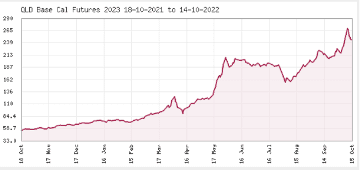November 11, 2022
The Australian energy system is in chaos, retailers are collapsing and your power bill has, or is about to, go ballistic, what gives?
Welcome to the National Energy Market, there are a range of issues but let’s start with an introduction to the Big3: AGL,Energy Australia and Origin Energy.
They are the 3 biggest Electricity Retailers and coincidentally the 3 biggest Electricity Generators, otherwise known as the Gentailers; aka the Big3
A bit of history, when the National EnergyMarket was set up in 98, they split the retail, network and generation sides, to promote competition and ‘efficiencies’ amongst the biggest buyers of electricity (retailers), and the biggest sellers (generators) in their separate sectors. A bit of flat-earth economics but at least there was a plan.
In practice through a bunch of mergers and acquisitions the gentailers quickly emerged. Which again the original purpose was to keep the separate sectors apart to promote competition amongst peers.
Now the twist in the story is that retailers need to protect themselves from wholesale price volatility when they buy from wholesale market at floating prices to sell to the retail market (I.e.you and me) at fixed prices. they do this through what are called ‘hedges’,which basically means they get to buy energy at a fixed price. So in a nutshell, buying fixed price selling at fixed price. Now as it happens the biggest sellers of these ‘hedges’ are the generators.
But now the Big3 are the biggest buyers and sellers of power to themselves basically. Which begs the question of what if you aren’t one of the Big3? what sort of terms are you likely to get?
Since the market went bezerk in June nine smaller retailers has collapsed, because they can’t lock in a price at which they buy power lower than what they can sell it. To put it in perspective here is a graph of what has happened in hedge pricing since May just in Queensland.

A side note is that in the system is that if a retailer goes to the wall, they can’t just cut off people’s power, they have a system called ‘Retailer of Last Resort’. Basically, it means you automatically get transferred to another retailer. Coincidentally those Last Resort Retailers just happen to be the big3!
To recap, the biggest sellers of price protection are also the ones to benefit if your smaller retailer can no longer afford it. Cool system. Even the head of the ACCC Rod Sims said of the rise of the gentailers it “probably was a mistake”. A view perhaps more useful when he was the one who had the power to approve the mergers. If so, perhaps things like the ‘Prohibiting Energy MarketMisconduct Bill 2019’ would not have been required – one aspect of which is to punish generators from withholding hedge contracts funnily enough.
The litany of what is wrong with the energy system is long and for other posts. However, we are not powerless and at the mercy of this overly concentrated market. Households are potentially another source of price protection for a retailer. A retailer that engages and cooperates with households to provide incentives and the data for them to help manage demand has huge potential, and one that doesn't have to wait for the permission of gatekeepers. Huge amounts are spent on hedging and price protection. If through cooperation between a retailer and households that sector of the market can be avoided and the network can adapt to changing conditions, use the network more efficiently, maximise renewable resources to unlock unlocking value that can be shared.



